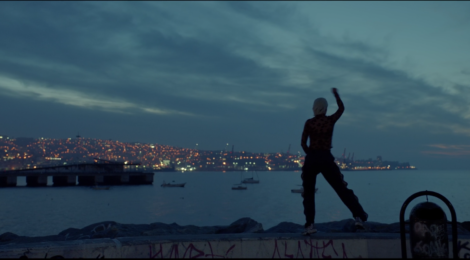
Ema Navigates the Port
By Paul Merchant*
Towards the end of Ema, the eponymous protagonist is asked to draw a picture of a house by a psychologist as part of an assessment for a job in a school. Ema is rendered uneasy by the task: she’s worried it might seem a sad house, that she hasn’t drawn it well. Her unease comes as something of a surprise. In Pablo Larraín’s film she moves through the fragmented, jagged spaces of the Chilean port of Valparaíso with a diabolical grace, knitting together a highly unconventional new family unit in her quest to reclaim her adopted son Polo. Yet as her plan nears its conclusion, we realise that Ema herself is not entirely sure of what it is that she’s aiming to build.
Ema, like many recent Chilean films (Fernando Lavanderos’ Las cosas como son, 2012, for instance), tackles the uncomfortable meeting point of the domestic sphere with the life of a contemporary city. What is remarkable about Ema is the degree to which this intersection is rendered spatial, even geometrical. This is not to say that Larraín simply abstracts Valparaíso into a series of shapes. The city is not just a map of the protagonist’s desires, but also, as Larraín himself has suggested, a character in its own right. This is because it’s not possible fully to appreciate how Larraín and his cinematographer Sergio Armstrong make use of the city’s unique geography without considering the history of social divisions that that geography implies. There are two kinds of spatial opposition at work in Larraín’s Valparaíso: between enclosed and open spaces, and between the high and the low.
The latter is particularly resonant with Valparaíso’s history: the lower, flat part of the city near the port, known as el Plan, was for many decades the centre of commercial activity and prosperity. Many of the 42 hills (in Spanish, cerros) surrounding the bay, meanwhile, have often been categorised as the home of the impoverished and the marginalised. This spatialised inequality has proved of considerable interest for filmmakers both Chilean and foreign: Joris Ivens’ …à Valparaiso (1963) and Aldo Francia’s Valparaíso mi amor (1969) are two of the more famous cinematic engagements with the topic. Ema and her friends play on the city’s inequalities and their associated prejudices when they talk to the fireman Aníbal after having torched a car in the city centre: one of the group blames the incident on people who have ‘come down from the hills’.
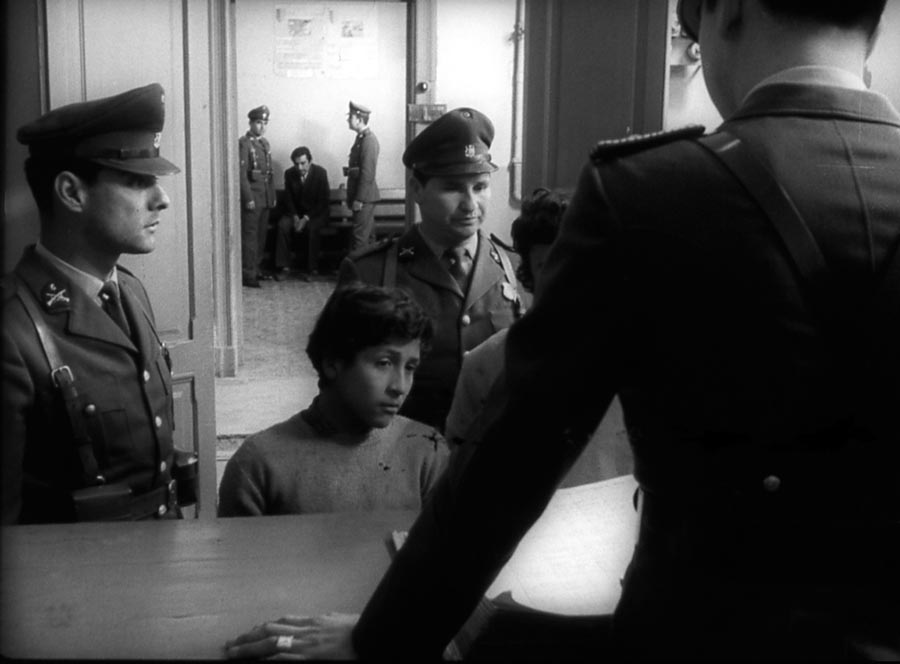
Some of Valparaíso’s cerros, such as Cerro Alegre and Cerro Concepción, have been undergoing a process of gentrification for some time, however (Cáceres Seguel 2019). And correspondingly, it isn’t always obvious in Larraín’s film that a lower vertical position implies greater power. Gastón and Ema’s house, for instance, is notable for its commanding views towards the ocean. Yet it might just easily be viewed as a household teetering on the brink, like the coastal house occupied by sinful priests in Larraín’s earlier film El club (2015). The ambiguous connection between the vertical spatial axis and power relations in the film makes itself felt throughout: nearly all of Ema’s shot-reverse shot conversational exchanges appear to be filmed at a slight angle – one person is viewed in a high-angle shot, the other from below – establishing a sense of inequality that the spectator cannot easily resolve. When Ema, Gastón and Polo meet Raquel and Aníbal at the film’s dénouement (Figure 2), Ema stands downhill from her new lovers/family members, but is still pulling at least some strings.
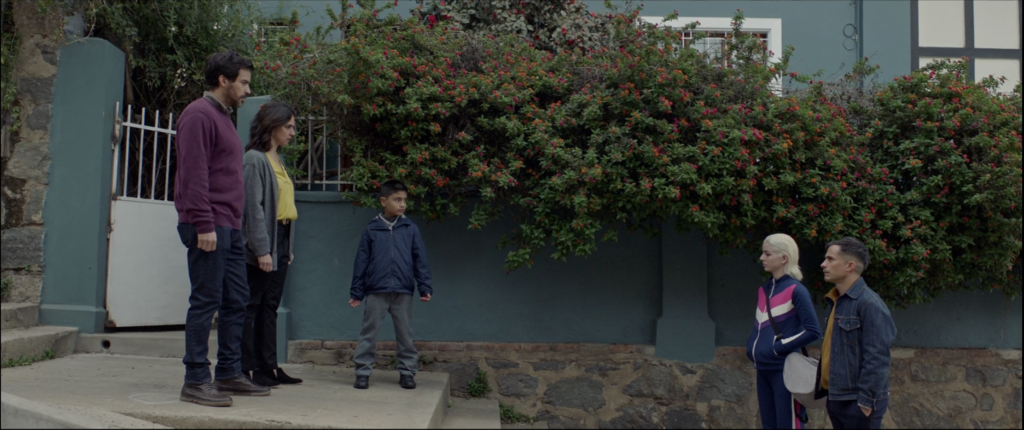
If Ema refuses to offer a definitive social reading of Valparaíso’s vertical spaces, the opposition that the film constructs between enclosed and open spaces is rather more clear-cut. The restrictive nature of Gastón and Ema’s relationship after Polo’s departure is frequently visually rendered as a profusion of squares and rectangles, in the form of window and door frames, or the edges of other components of the mise-en-scène. This visual strategy is echoed in various institutional settings throughout the film. Moreover, in the pivotal sequence halfway through the running time when Ema breaks with Gastón’s folkloric dance group in order to dance reggaeton (and wreak havoc) with her girlfriends, the floor on which they are standing is chequered black and white. This is a film in which characters spent much time moving through corridors or narrow streets, hemmed in by vertical lines. When Ema dances reggaeton with her friends, conversely, their movement and the camera’s is often horizontal, and sometimes the camera swoops around them in a travelling shot.
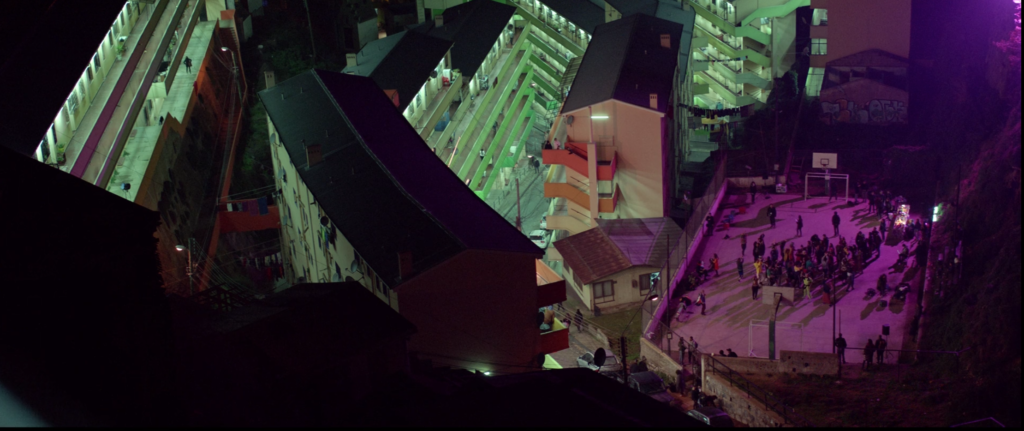
It is perhaps unsurprising that the reggaeton dancing often takes place near the seafront, with the blue-grey horizon as a backdrop. The chaotic, intersecting lines of the cityscape give way to blocks of colour (Figures. 3 and 4). It is tempting to view the coast and the ocean as spaces of liberation: Ema relaxes with her friends on the beach, sits in a lifeguard chair looking out to sea, and goes on a boat trip with Raquel, her divorce lawyer and lover. Yet these, too, are contested spaces, as the film’s heated discussions of the port’s history and culture make clear. In the sequence mentioned above, when Ema breaks away from Gastón’s folkloric dance group, one of the reggaeton dancers accuses Gastón of subscribing to a vision of the city akin to that of ‘a typical cruise tourist who takes a few photos and thinks they know the history of the port’. Gastón’s idea of the city’s streets and their culture, the dancer claims, corresponds to an imagined hundred-year-old past, a vision that has more to do with Paris than with Chile.
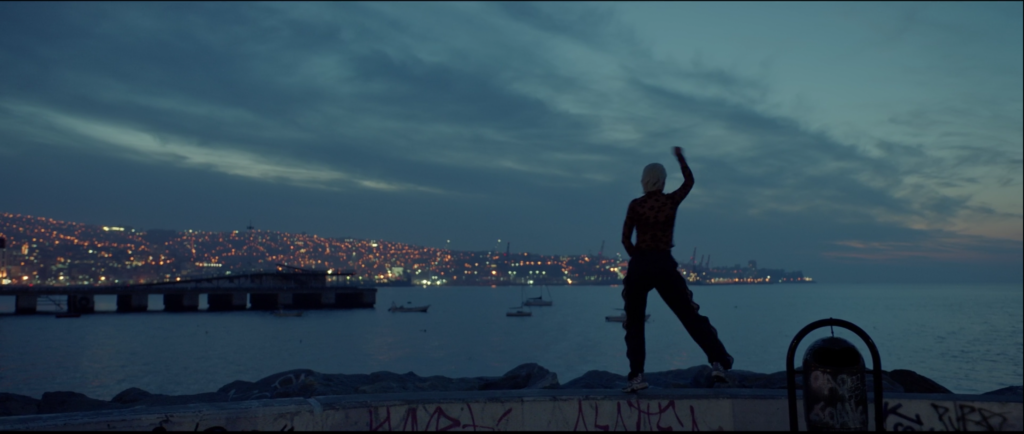
Larraín’s film doesn’t give the spectator a single vision of Valparaíso in place of ossified folklore, however. Ema’s opening shot, of a set of traffic lights set ablaze, presumably by Ema’s flamethrower, suggests that any spatial or narrative ordering will be resisted. While there is definitely something afoot in the film’s use of colour (green seems to be associated with restrictive spaces and relationships, for instance), there is no easily discernible pattern. Meanwhile, a later sequence, in which the camera circles around a bust of the Chilean naval hero Arturo Prat, also in flames, reinforces the sense that Ema is taking aim at an easily digestible touristic or monumental vision of the city.
But what about Ema herself? Does she achieve liberation from the restrictive social and spatial hierarchies of Valparaíso? The film’s closing shots are of her new family life, and the internal frames and enclosures of earlier sequences re-emerge (Figure 5). In an echo of 2015’s El club, the spectator is returned to an uneasy domestic situation, albeit one that has been drastically reconfigured. The film’s final shot, though, shows Ema filling a canister at a petrol station, with the cranes of the port visible in the distance. Like the beguiling film she gives her name to, she won’t be pinned down.
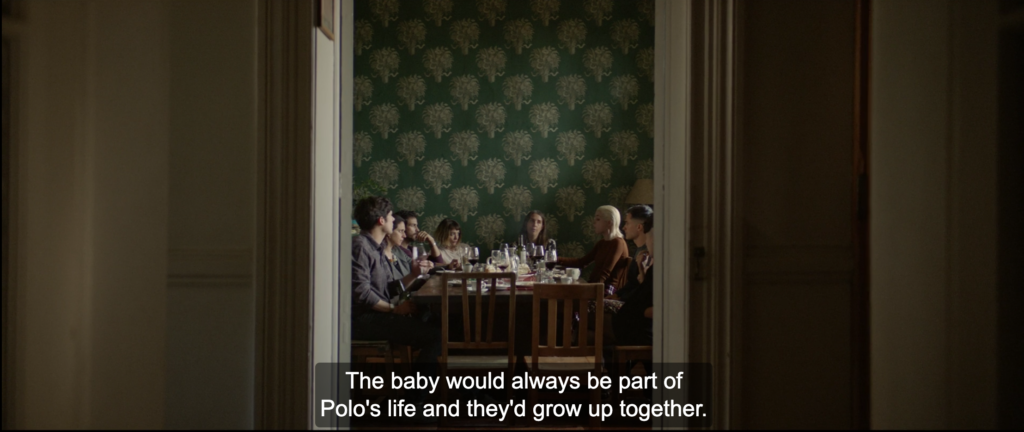
Works cited
Cáceres Seguel, César. 2019. ‘Turismo, gentrificación y presión por desplazamiento en lo cerros Concepción y Alegre de Valparaíso’. Revista INVI 34, no. 97: 157-177.
*Bio
Paul Merchant is Lecturer in Latin American Film and Visual Culture at the University of Bristol. His forthcoming monograph, Remaking Home: Domestic Spaces in Argentine and Chilean Film, 2005-2015 (University of Pittsburgh Press) explores the formation of new domestic communities in contemporary fiction and documentary cinema. His current research, supported by an AHRC Leadership Fellowship (beginning February 2021), examines cultural responses to the Pacific Ocean in modern Chile and Peru. The project seeks to understand how the work of visual and audiovisual artists from the Pacific coast of Latin America can help us live well in changing coastal environments across the world.






